Interaction Design
Arc
Project Summary: GLMPR, a manufacturer of innovative camping and outdoor leisure equipment, is looking for new product ideas using LED lighting technology. I narrowed my design for a family going on a weekend glamping experience.
Consumer Profile: Mixed families, ages 3-30+
Roles: Researcher, Product Designer
Design Tools used: Fusion 360, Photoshop
Design Process
This was my process of how I approached the challenge and how it guided my to my final design.
As I researched what light products are currently out there, I began to sketch out ideas that resonated with me and how I wanted to provide something useful for this family during their camping trip. Below are my initial sketches that explored form and function in the form of ground stakes, hanging fixtures and objects that can be thrown around and be fun to use.
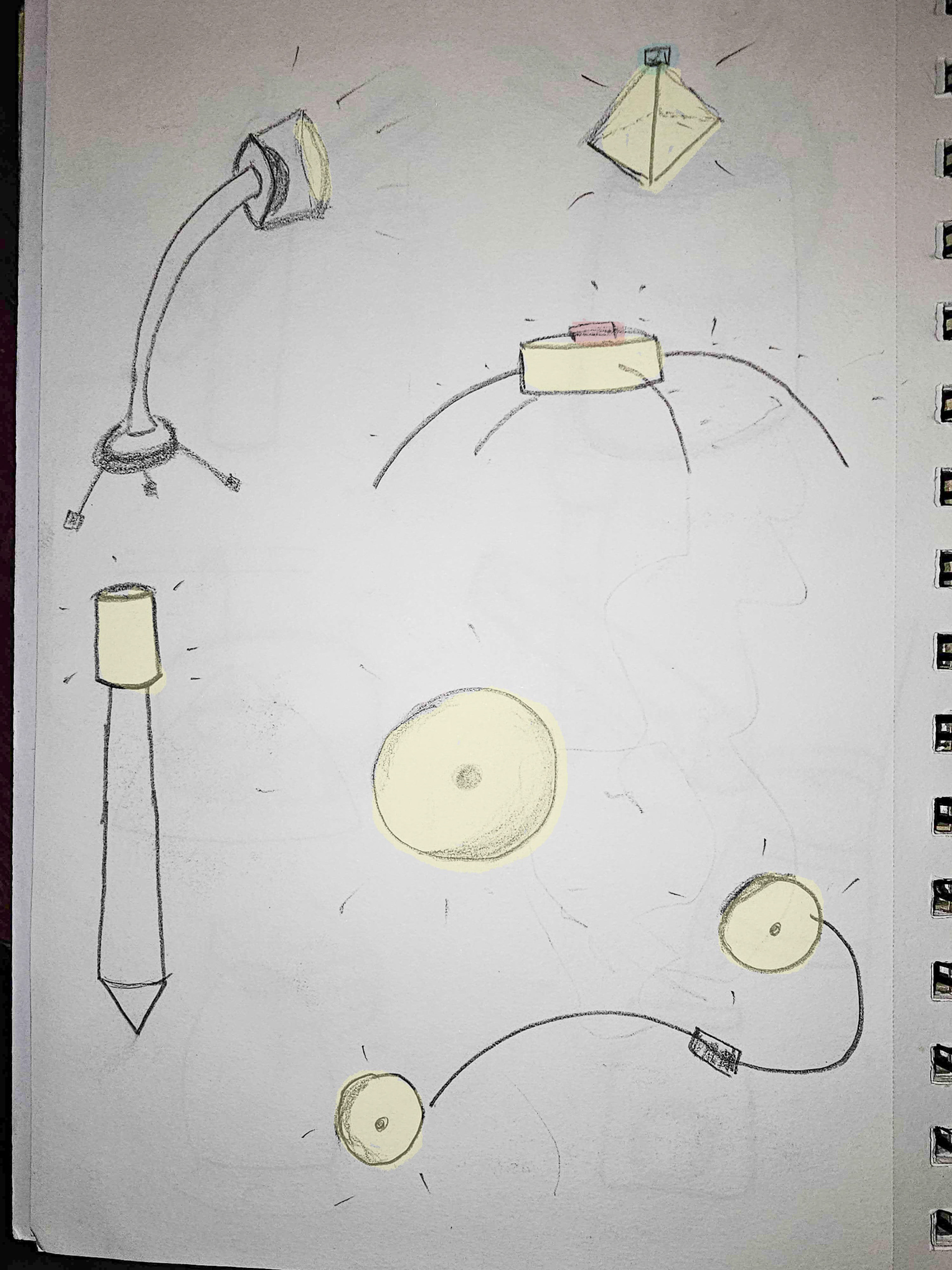
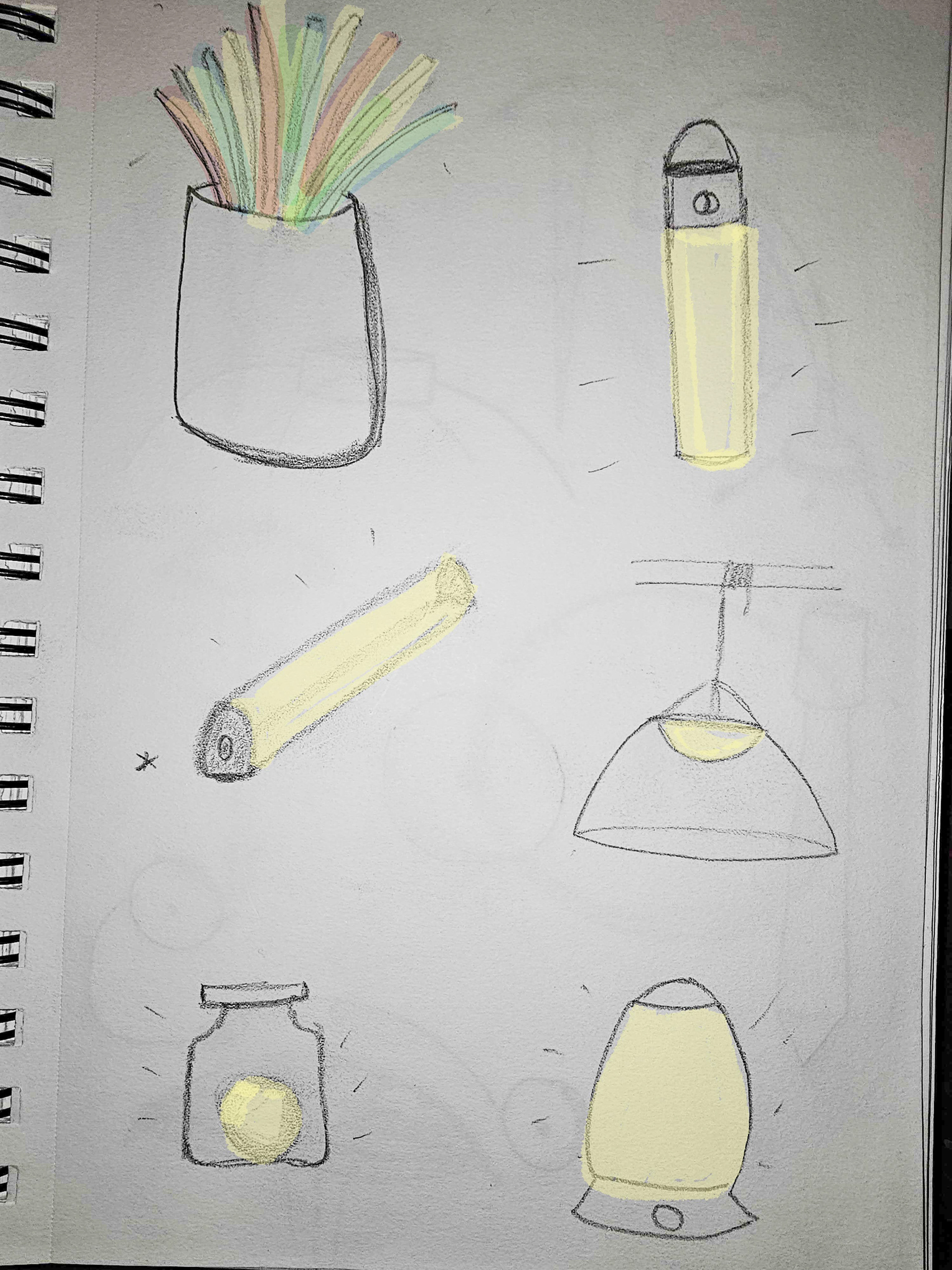

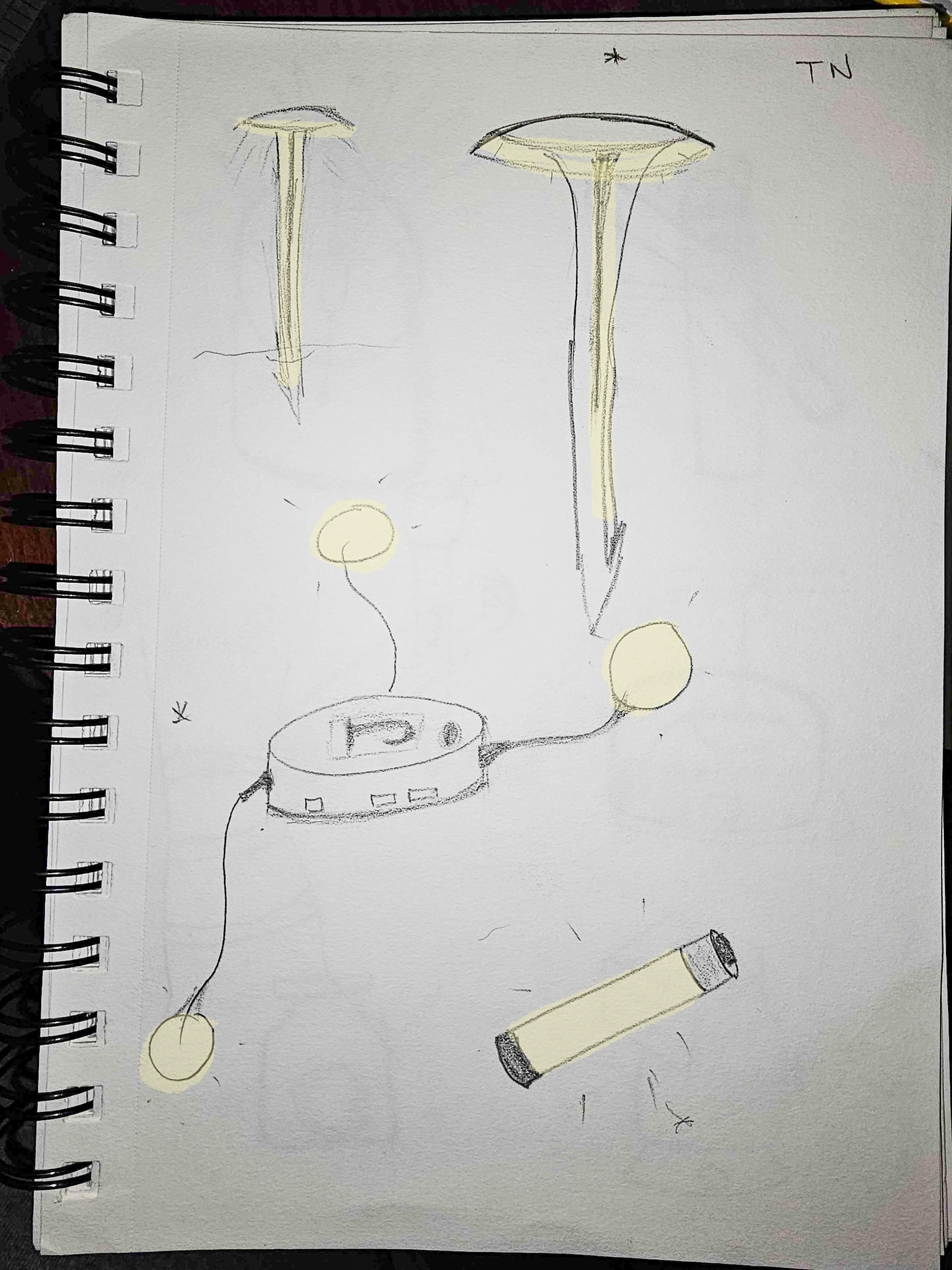
Initial sketches explored the combining of functionality, style, and portability for the new lighting product.
I narrowed my focus on these items; a ground stake that lights up when pushed into the ground, an omni-directional handheld light, and a light up half-cylinder bar that could be used around the camping table.
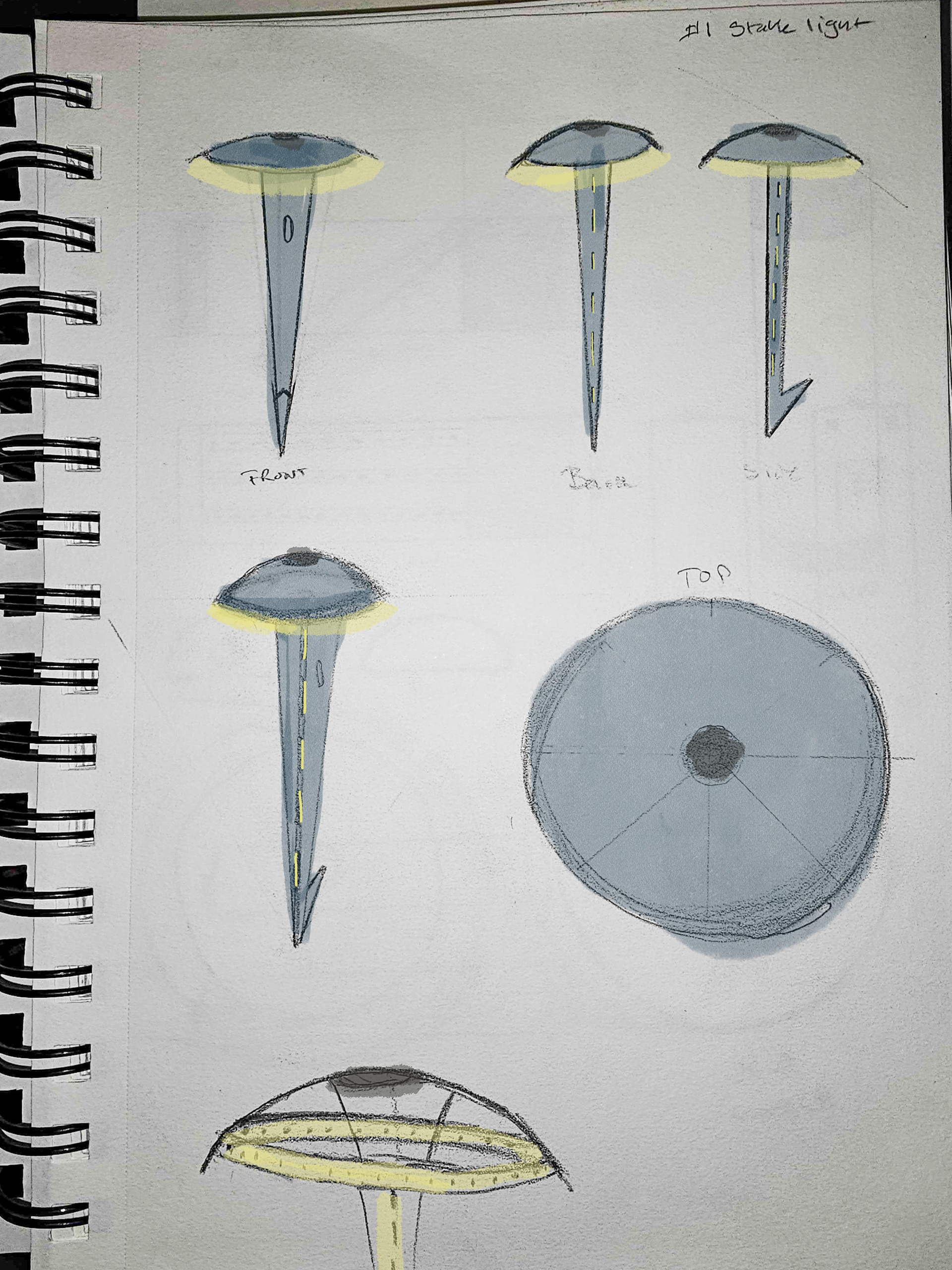
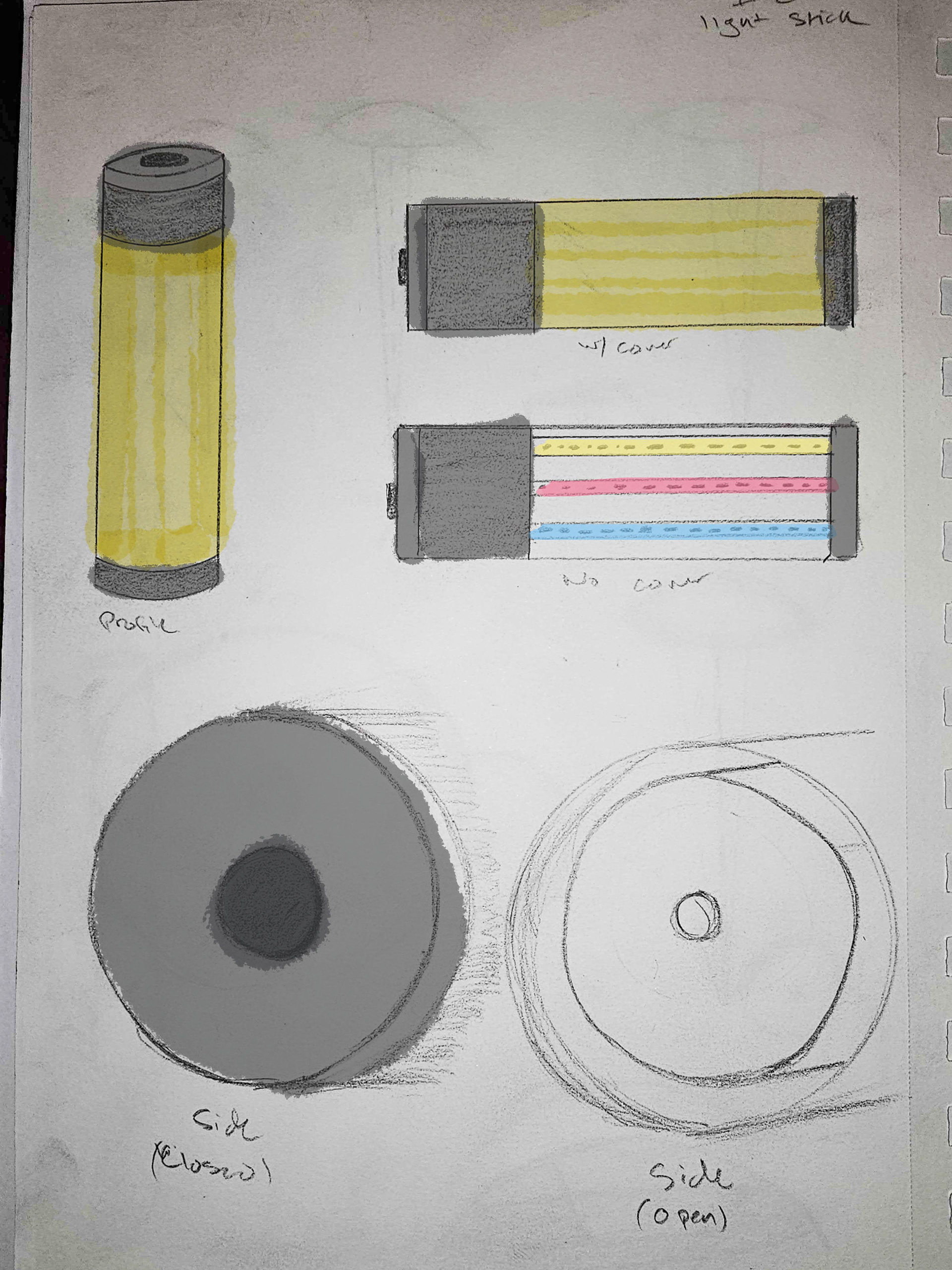
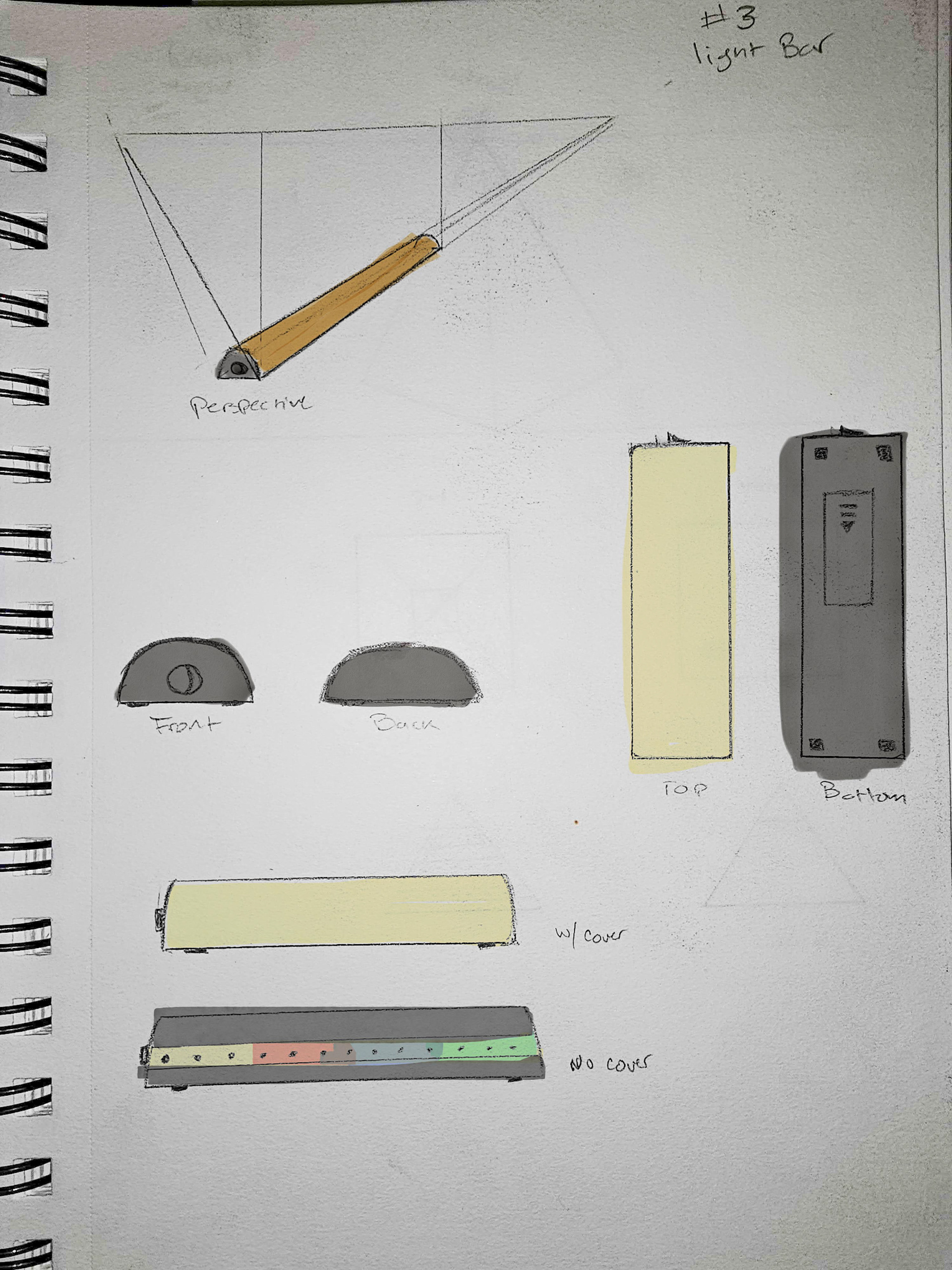
Initial 3D modeling
The product that I wanted to explore further was the half cylinder light object that can be placed on flat surface to light up the around it. They object needed to be portable and sturdy to be used by young kids, yet powerful enough to light up the surrounding areas.
The shape was designed to be simple and sturdy
The half cylinder arch shaped ensures that the body is strong enough to face the various elements that it would be used in.
In my initial renderings, I thought about the various components this would need in order to be created.
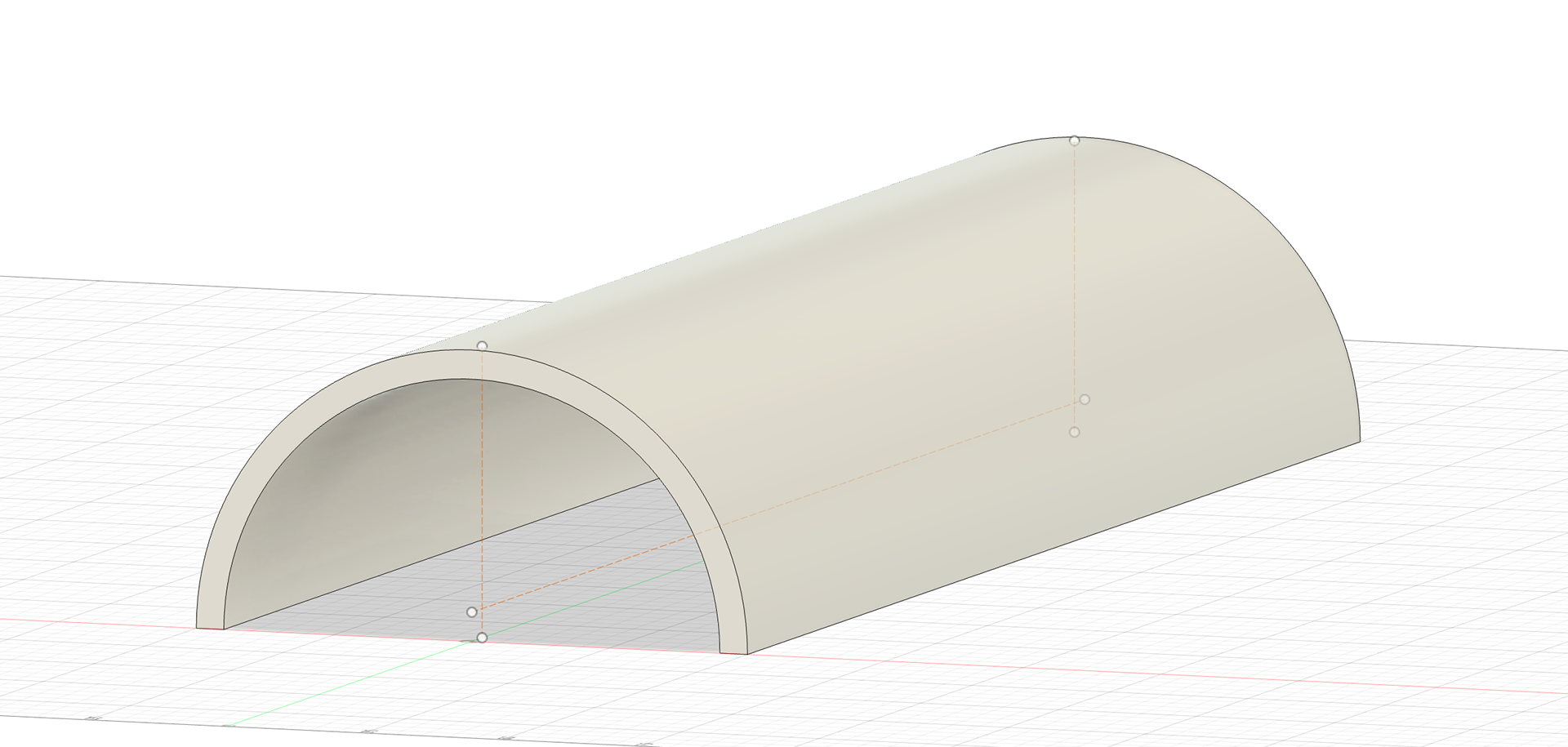
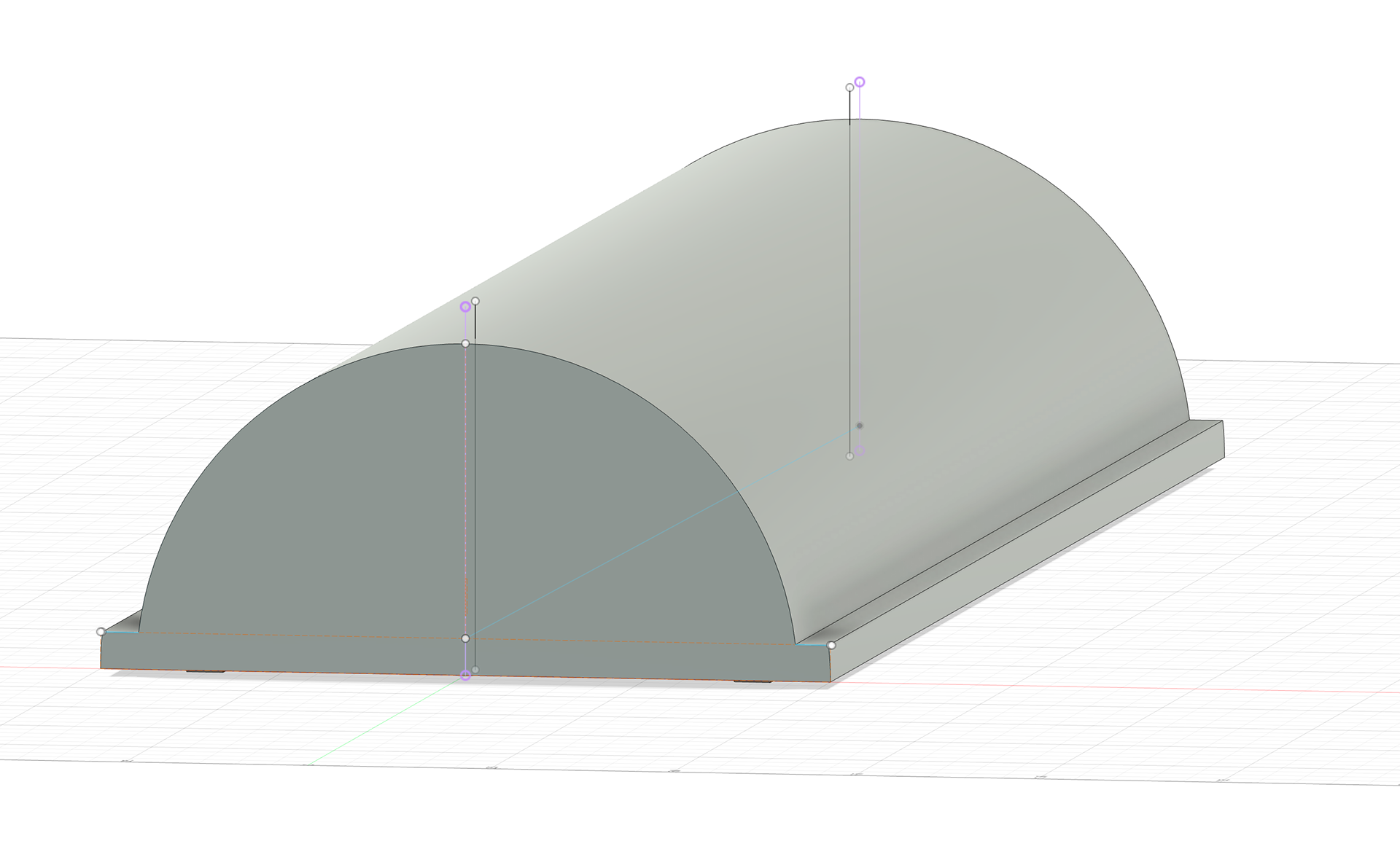
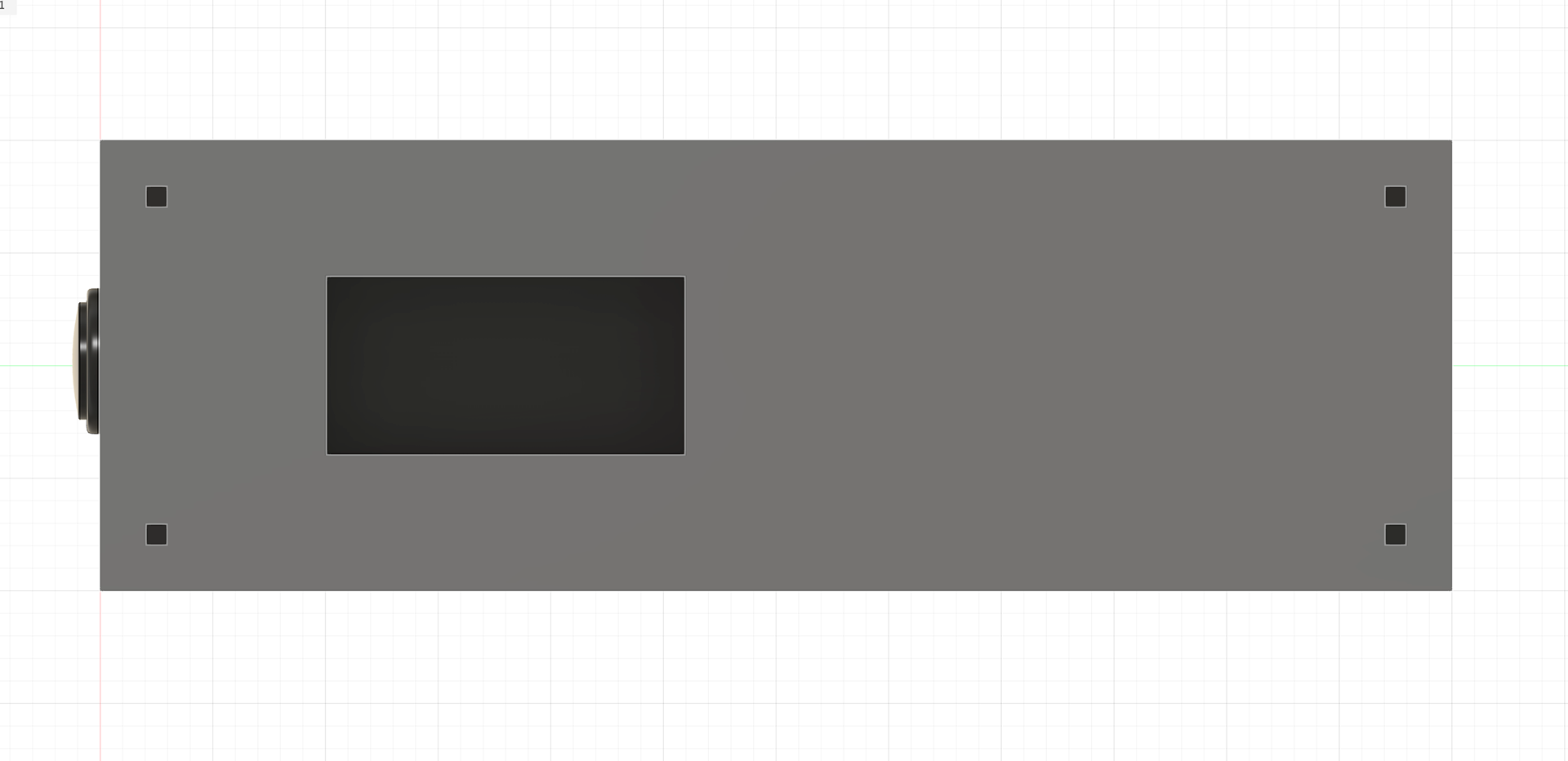
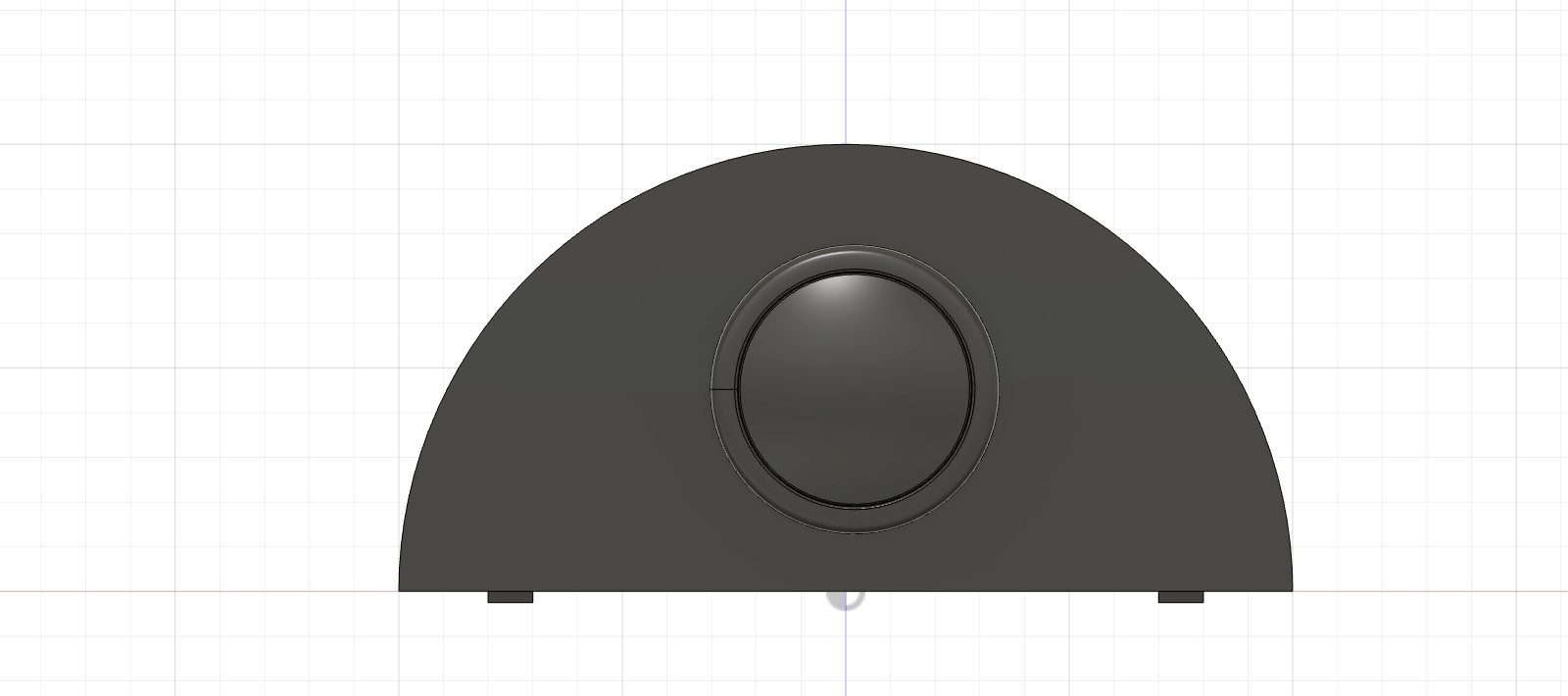
A translucent diffuser cover to protect the LED components beneath it was key to creating the soft light effect that I pictured in this camping scenario. A sturdy plastic body ensures that it could fall and not break. The device would be powered by 2 x AA batteries which would be a staple of any camping trip. Finally, the device would be controlled by a push-start button and a dimmer knob to control the intensity of the light.
Physical Prototype
A physical prototype helped me to think about the scale and size of the product and how the target user might interact with it.
Children using the power button on the physical prototype
About a foot long, I modeled the device after common items that people use all time time such as water bottles and bluetooth speakers. This scale showed me that this size is easy to carry and be used by kids and adults. I also found that this size is perfect for picnic tables because it doesn't take up a lot of extra space. Its shape is minimalistic in nature and so it also doesn't distract from its surroundings either.

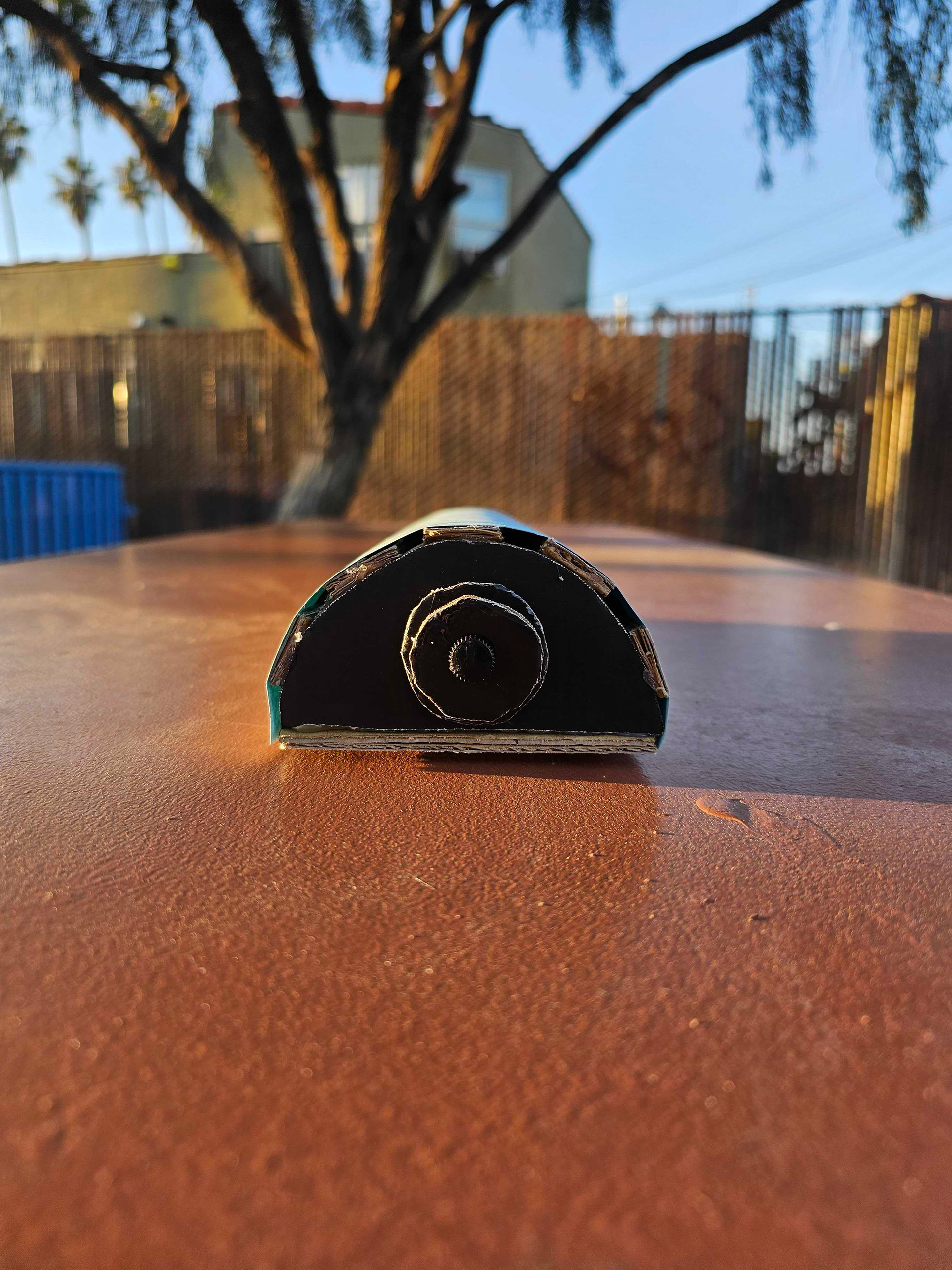
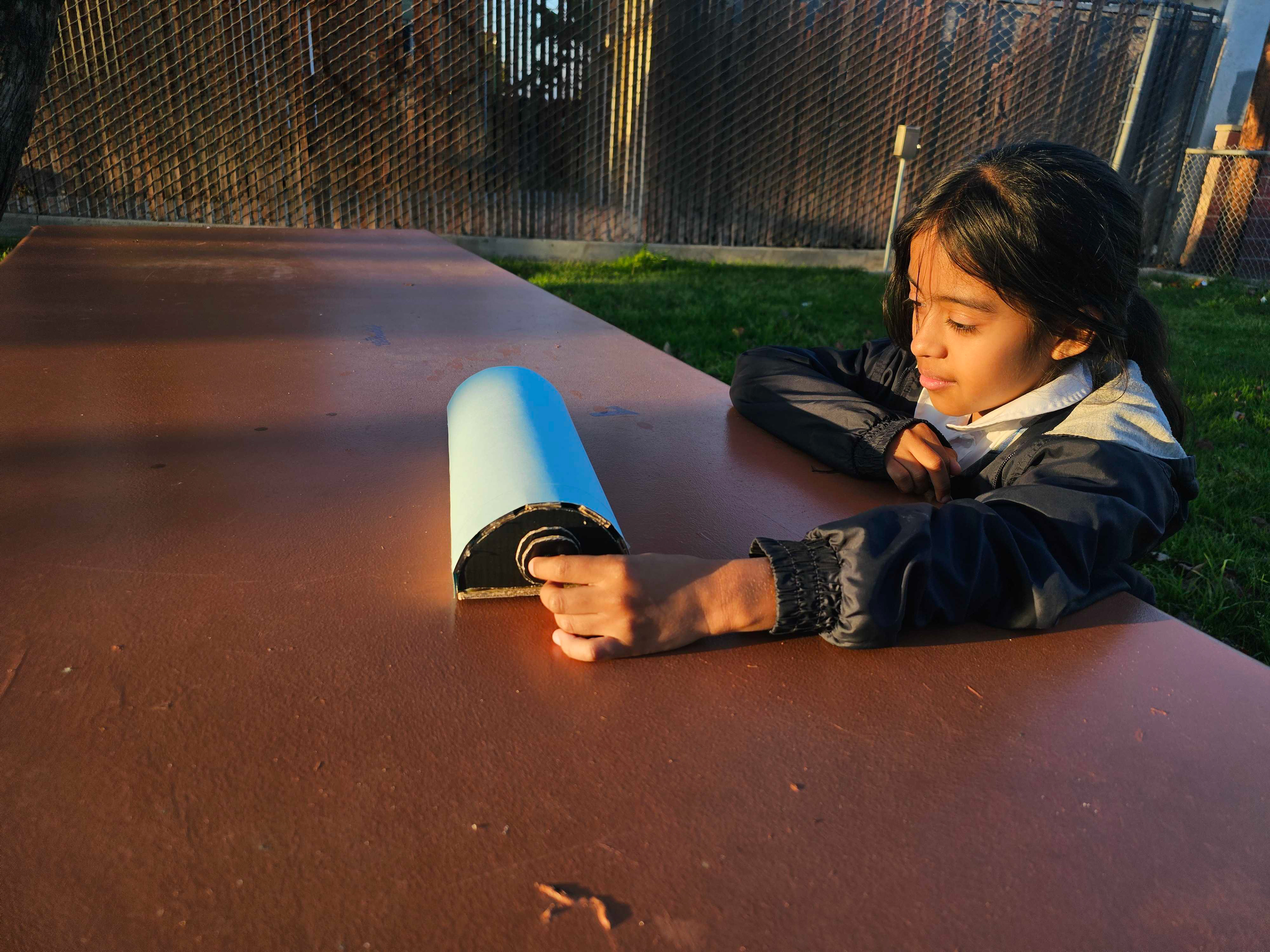
Technical Volumetrics
Once the dimensions were set and the idea solidified, I had to get down to the specifics of how this device would work. I included a recessed section for three LED strips and spread them out evenly across the surface. The power source, a 2x AA battery housing was placed next to the Optotronic 50w power driver. The circuitry was designed to be a simple loop of operation and power.
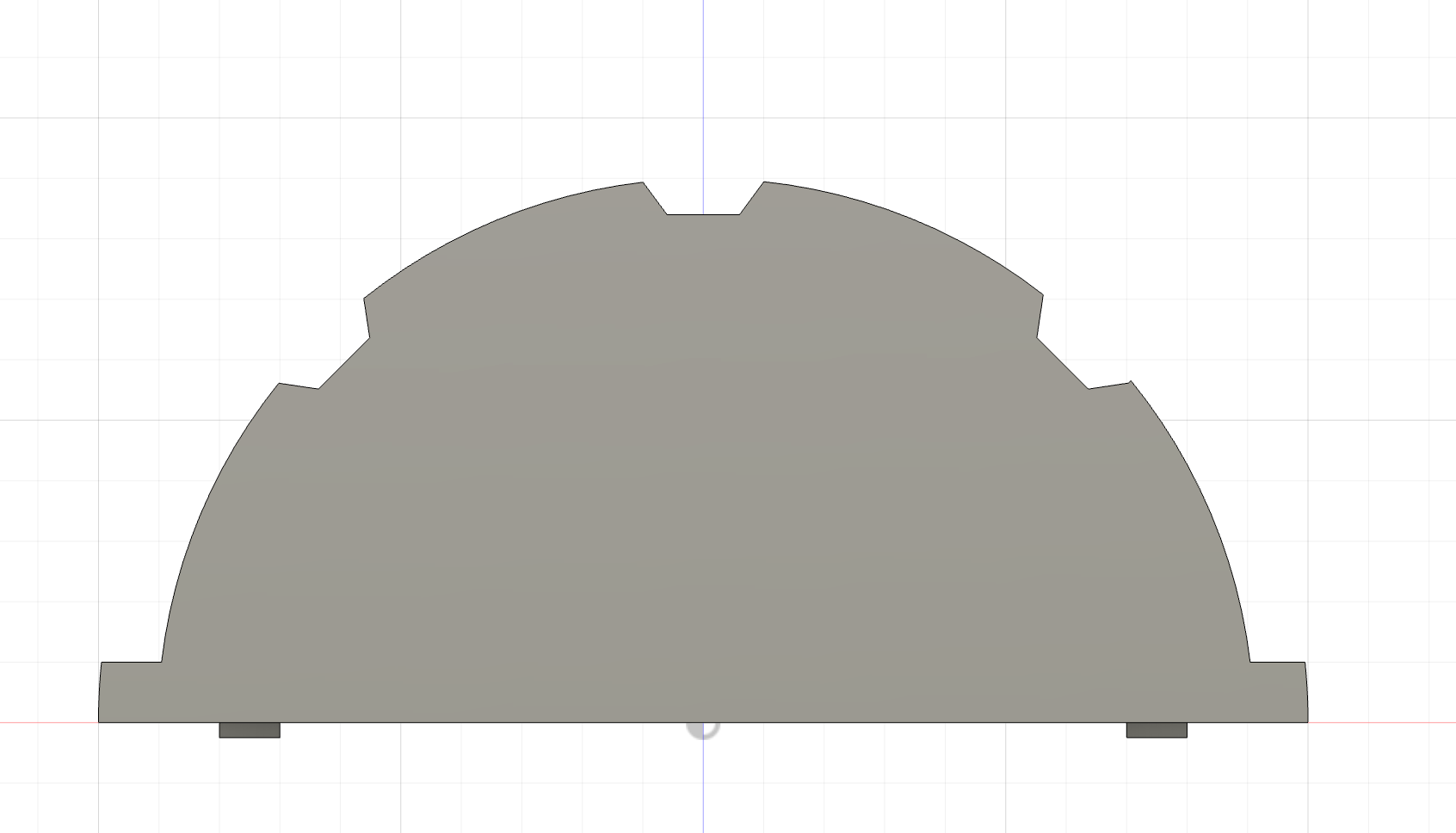
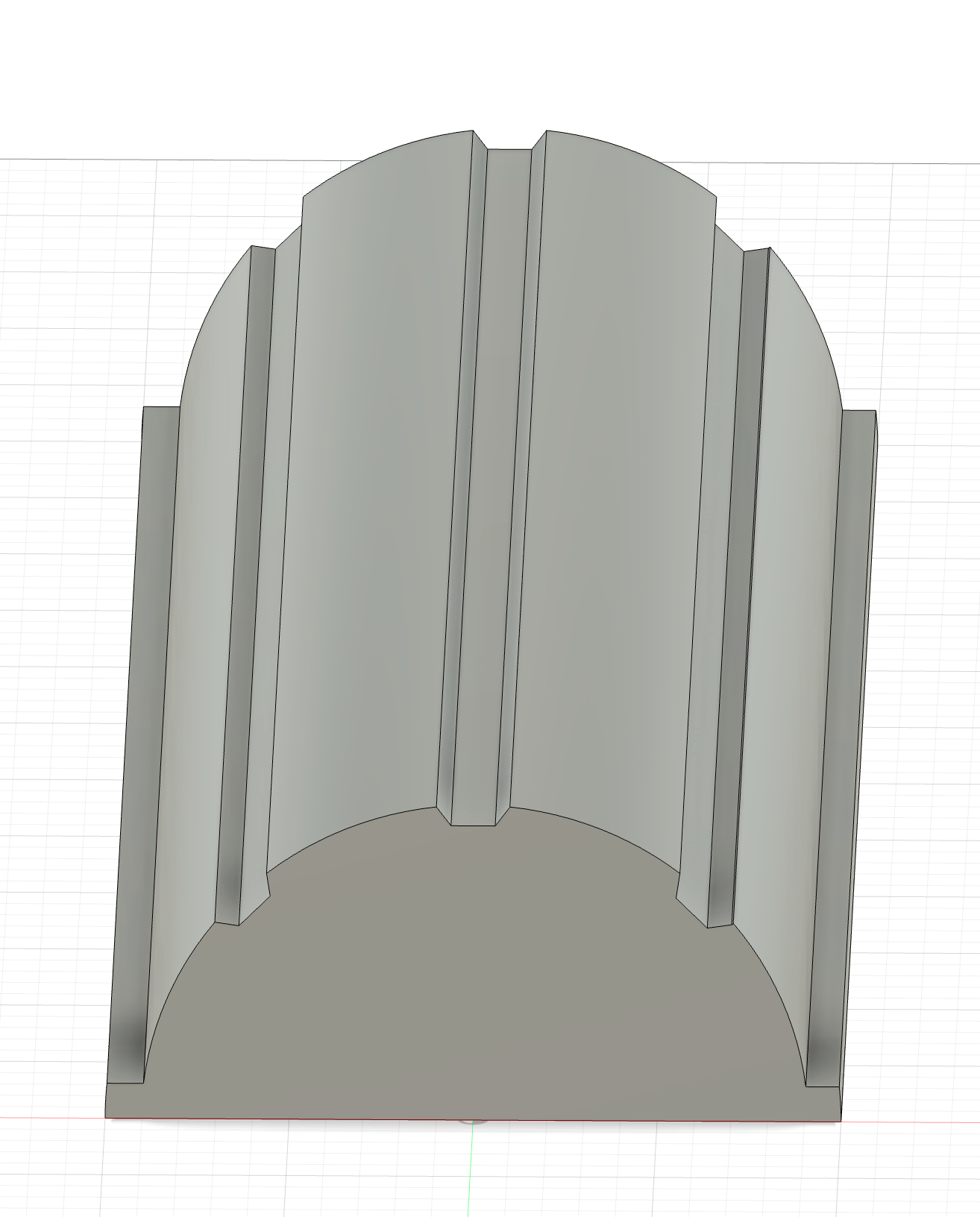


Final Renders
In the final renderings, I placed the device on a picnic table outside and illuminated the LED device. In the dark, the diffuser was able to spread out the light evenly.
Here's a few more angles of how this product turned out.
Here's a few more angles of how this product turned out.





Final thoughts
This project allowed me to explore how form and function are essential to creating a physical product. It forced to think about how things worked together and how they should work in the real world.
There are still a few things that I need to consider for future designs such as the wiring, different all-weather proof materials, the production and additional field tests.
After creating the device, I found that it could be used in different settings as well because of how it was constructed. I imagine it could be utilized in the home such as a bedside lamp, in restaurants tables and in people's cars if they should need just an extra bit of light.
As for a name, I went with its simple shape: ARC
As for a name, I went with its simple shape: ARC
